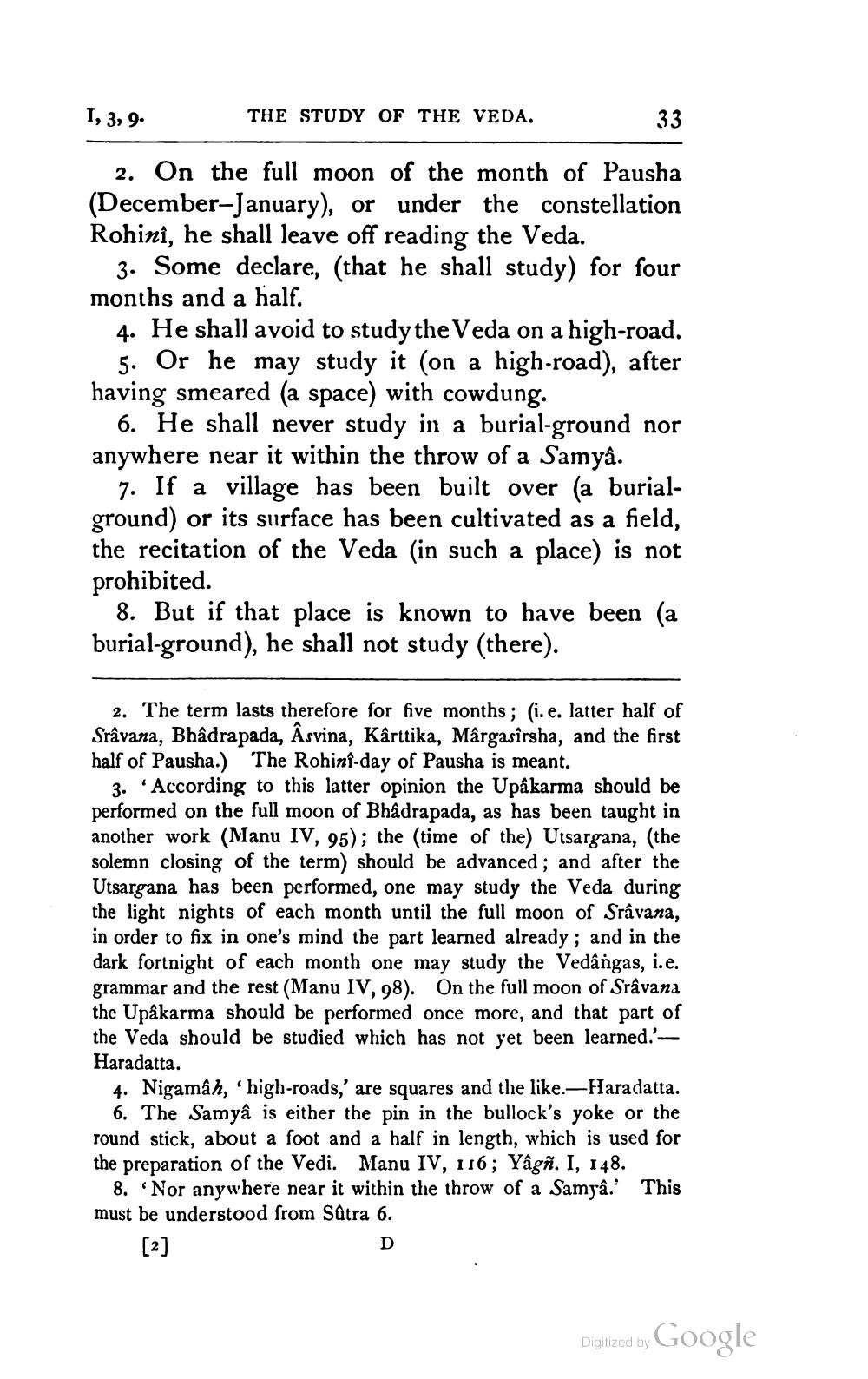________________
I, 3, 9.
2. On the full moon of the month of Pausha (December-January), or under the constellation Rohini, he shall leave off reading the Veda.
3. Some declare, (that he shall study) for four months and a half.
THE STUDY OF THE VEDA.
33
4. He shall avoid to study the Veda on a high-road. 5. Or he may study it (on a high-road), after having smeared (a space) with cowdung.
6. He shall never study in a burial-ground nor anywhere near it within the throw of a Samyâ.
7. If a village has been built over (a burialground) or its surface has been cultivated as a field, the recitation of the Veda (in such a place) is not prohibited.
8. But if that place is known to have been (a burial-ground), he shall not study (there).
2. The term lasts therefore for five months; (i. e. latter half of Srâvana, Bhadrapada, Âsvina, Kârttika, Mârgasîrsha, and the first half of Pausha.) The Rohinî-day of Pausha is meant.
3. According to this latter opinion the Upâkarma should be performed on the full moon of Bhâdrapada, as has been taught in another work (Manu IV, 95); the (time of the) Utsargana, (the solemn closing of the term) should be advanced; and after the Utsargana has been performed, one may study the Veda during the light nights of each month until the full moon of Srâvana, in order to fix in one's mind the part learned already; and in the dark fortnight of each month one may study the Vedângas, i.e. grammar and the rest (Manu IV, 98). On the full moon of Srâvana the Upâkarma should be performed once more, and that part of the Veda should be studied which has not yet been learned.'Haradatta.
4. Nigamâh, high-roads,' are squares and the like.-Haradatta.
6. The Samyâ is either the pin in the bullock's yoke or the round stick, about a foot and a half in length, which is used for the preparation of the Vedi. Manu IV, 116; Yâgñ. I, 148.
8. Nor anywhere near it within the throw of a Samyâ. This must be understood from Sutra 6.
[2]
D
Digitized by
Google




